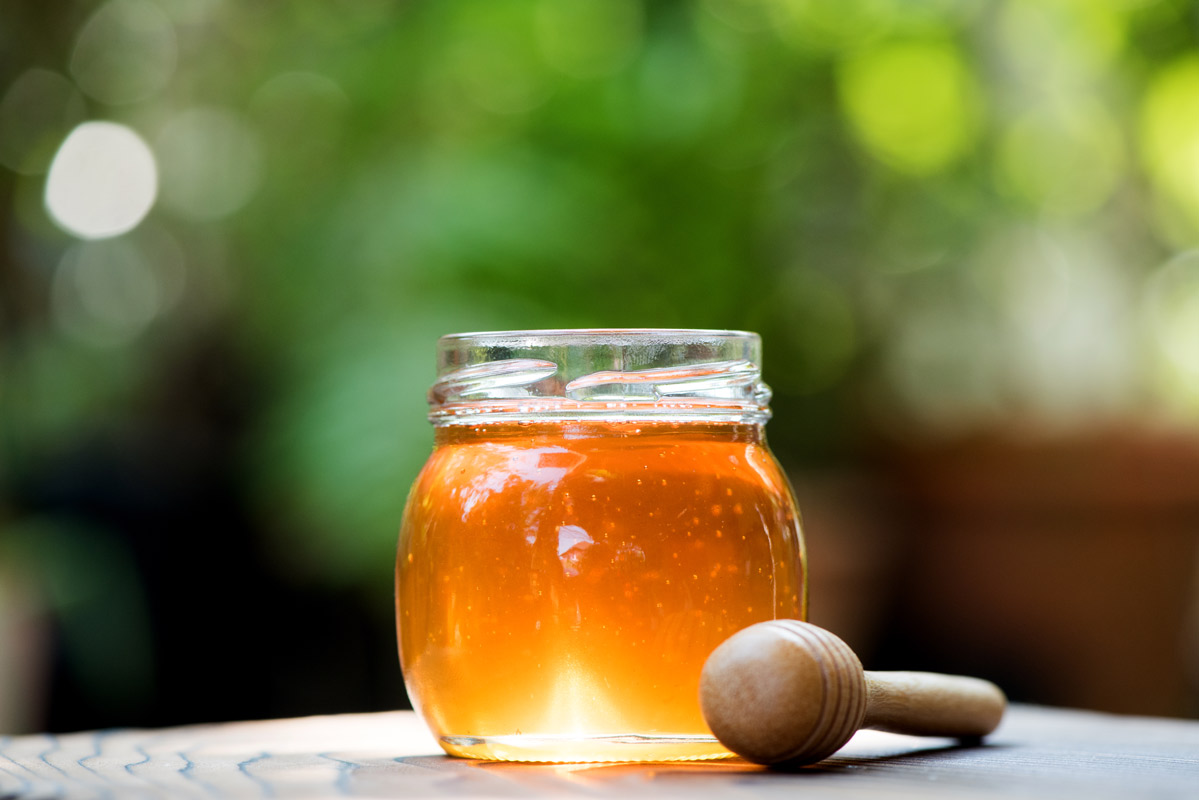Beef Stew à la Française Recipe, Spotlight on Dijon Mustards, Dredging Meat, A Different Kind of Resolution and How to Avoid Injury During Winter Activities
When there’s a chill in the air, there needs to be something hot and tasty on the stove! My version of beef stew adds a few French touches—notably the Dijon mustards and brandy—for a dish that’s as delicious as it is comforting. For even greater well-being, consider becoming an optimist—it’s a state of mind with unique benefits. And on a practical level, the American Academy of Orthopaedic Surgeons has tips for staying safe when conditions are icy.
Beef Stew à la Française
 Beef Stew à la Française
Beef Stew à la FrançaiseThe aromas wafting from this stew as it cooks are tantalizing! And the finished dish is worth the wait (it gets even better the next day). Enjoy it on its own, over broad noodles, or with a side of creamy mashed potatoes.
Ingredients
- 1/4 cup whole wheat flour
- 1 teaspoon sea salt, plus more as needed
- 1 teaspoon freshly ground black pepper, plus more as needed
- 4 tablespoons extra virgin olive oil, divided use
- 4 garlic cloves, minced
- 12 shallots, trimmed and peeled
- 12 ounces white mushrooms, trimmed as needed and sliced
- 2 pounds stew beef, trimmed of external fat and cut into roughly 1-inch chunks
- 1/2 cup Armagnac, Cognac, or other brandy
- 2 cups beef stock, more as needed
- 1/2 cup dry red wine
- 1/3 cup creamy Dijon mustard
- 1/3 cup whole-grain Dijon mustard
- 1 teaspoon herbes de Provence
- 6 carrots, peeled and sliced into 2-inch lengths
Directions
Step 1
In a bowl large enough to hold the meat, whisk together the flour, salt, and pepper; set aside near your stovetop. Heat a large Dutch oven or stockpot over medium heat. When hot, add 2 tablespoons olive oil, the garlic, and shallots, and sauté until they soften. Add the mushrooms and continue cooking until they’ve browned. Use a slotted spoon to transfer the garlic, shallots, and mushrooms to a bowl.
Step 2
Add the rest of the olive oil to the pot. Dredge the meat cubes in the flour mixture and add them to the pot (work in batches if needed to avoid crowding). Use tongs to turn them to get a nice sear on all sides. Deglaze the pot with the brandy, using a spatula to get up all the bits of fond on the bottom.
Step 3
Add back the vegetables and the rest of the ingredients, stirring to combine. Bring the liquid to a simmer, cover but leave the lid slightly ajar, and cook over low heat for 2 hours. Check periodically to see whether you need to add more stock to avoid scorching. When done, the meat should be so tender that it almost falls apart. Taste and add more salt and pepper if needed.
Yields 8 servings

Healthy Ingredient Spotlight
Dijon Mustards

Dijon, France, is the capital of the Burgundy region, known not only for its wines but also for its mustards. Traditional Dijon mustard is creamy yet spicy and my go-to for making delicious vinaigrettes and adding pungency to soups and stews, not to mention sandwiches and canapés. I also appreciate Dijon mustard variations, like grainy mustard—which primarily consists of whole mustard seeds—and country style, a mix of creamy and grainy. Dijon mustard’s heat comes from using brown and black mustard seeds—yellow mustards, made with yellow mustard seeds, are a lot milder. Unlike Champagne, which must be made from grapes from the Champagne region to bear that name, Dijon is not a protected term and can be made anywhere as long as it follows a certain recipe. For a true French Dijon mustard, check out the Maille brand, which was started in 1747 and is readily available on supermarket shelves in the US. Traveling? Maille has boutiques in Dijon, Paris, and London.

Quick Kitchen Nugget
Why Dredge?
Dredging meat in flour before cooking serves a tasty purpose: It encourages browning and, in turn, enhances flavor. Dredging as part of breading chicken cutlets, for example, helps the egg and then the breadcrumbs adhere. And it helps to thicken stews as they cook. While most recipes call for dregding with all-purpose flour, using whole wheat or white whole wheat flour has the edge—both of these flours retain the nutrients of the whole grain without changing the taste of the finished dish.

For Your Best Health
A Different Kind of Resolution
Beyond diet and exercise, there’s another resolution that may be even easier to stick with: embracing optimism. According to Scott L. Rogers, JD, a lecturer at the University of Miami School of Law and director of the Mindfulness in Law Program, there are many advantages to cultivating this state of mind. Here are some of his thoughts:
Optimism impacts mental and emotional well-being in stressful situations. Optimism shapes how you interpret situations and can often reduce your perceived stress. Even more, optimism can help you navigate rough situations more effectively, leading to better outcomes that enhance your emotional well-being.
An optimistic mindset can contribute to personal and professional success. When challenges arise, how we perceive and respond to them largely depends on our perspective and outlook for the future. An optimistic mindset—a way of approaching our experiences that recognizes the opportunities within situations and believes in our ability to contribute to positive outcomes—enables us to more effectively identify and pursue paths to achieve desired results.
Optimism can enhance physical health. Research suggests that approaching life’s events with a more optimistic outlook can boost health in part because of the release of hormones and neurotransmitters that improve mood and provide protective effects on the body. Additionally, positive emotions associated with optimism may boost the immune system, making the body more resistant to infections, reducing the risk of chronic diseases, and protecting against anxiety and depression.
Optimism can positively influence relationships and social connections. Optimism is contagious. Spending time with people who see the glass as half full—and feel empowered to refill it when it’s empty—can positively influence your outlook. Optimistic individuals tend to focus on solutions rather than dwelling on problems. Their hopeful and resilient approach not only models constructive ways of viewing the world but also helps reinforce optimistic thinking patterns while counteracting self-doubt and negative self-talk.
Optimism can help you overcome challenges. By focusing on the positive side of things, you’ll be more likely to view challenges as opportunities for learning and growth. You’ll start to see setbacks as external and temporary rather than internal and permanent. Over time, these tendencies become reinforced, building resilience.
Rogers pointed out that optimism can be cultivated through mindfulness, gratitude, cognitive-behavioral techniques, and spending time with optimistic and supportive people. He also gave two important reminders about optimism: “The first is that all of us can develop a more optimistic mindset. The second is that change takes place over time—a gradual process where little shifts can be rewarding and a gift to both you and those with whom you work and [who you] love.”

Fitness Flash
Avoiding Injury During Winter Activities
“Engaging in winter sports and recreational activities is an excellent way to support cardiovascular health and overall well-being,” said Alexander P. Sah, MD, FAAOS, orthopedic surgeon and spokesperson for the American Academy of Orthopaedic Surgeons (AAOS), the world’s largest medical association of musculoskeletal specialists. “However, cold weather brings unique risks that shouldn’t be ignored. Each year, healthcare facilities across the country see an uptick in bone and joint injuries tied to winter activities, many of which are preventable with the right preparation and safety measures.”
When you’re heading outdoors to enjoy your favorite cold-weather activities as well as when snuggling up in front of a roaring fire, consider these safety tips from Dr. Sah and fellow bone and joint health experts at AAOS to keep winter conditions from making routine activities hazardous:
Protect your back when shoveling snow. Lifting injuries can happen quickly and are very painful. Bend at the knees to use the large leg and glute muscles instead of your back when picking up heavy items. Don’t twist or rotate while lifting, especially when shoveling. Bend your knees and pivot your whole body, not just your torso.
Tread lightly and move confidently. If you live in a wintry climate, icy surfaces can lurk anywhere. In fact, the Centers for Disease Control and Prevention reports that approximately 1 million Americans are injured annually because of falling on ice and snow. Wear shoes with good traction to prevent slipping and falling, or buy slip-on shoe gear that adds traction when walking on ice.
Ski smart. Anterior cruciate ligament tears in the knee joint are common among skiers and snowboarders. Many injuries occur from falling backward or twisting the knee. Research has shown that keeping arms forward and hips over the knees can reduce the risk of injury. Adjust your bindings to meet your ability.
Don’t get burned. Practice caution with all types of open flames, such as candles and fireplaces, as well as when using your kitchen stove, and keep children and pets far away from them. Know what to do in case of a burn: Treat minor burns with cool running water, a sterile bandage, and an over-the-counter pain reliever. Serious burns require immediate medical attention.
Get More Recipes In Your Inbox!


